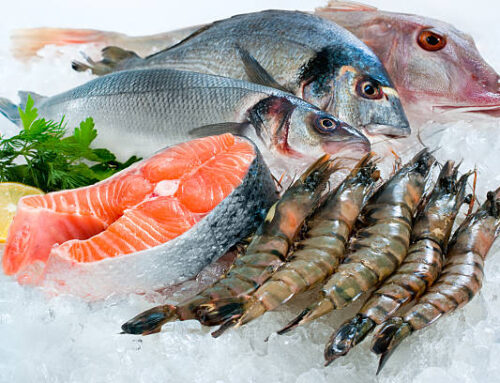Welcome to the world of tripotassium phosphate, a versatile ingredient that works in many filed. With its unique properties and multifunctional capabilities, tripotassium phosphate plays a pivotal role in the food industry and technology industries. In this blog, we will delve into the detailed specifications of tripotassium phosphate, shedding light on its potential applications and benefits.
We will proceed with the blog in the order of the following questions:
- What are the Specifications of Tripotassium Phosphate?
- Why is Tripotassium Phosphate Used in Food?
- Is Tripotassium Phosphate in Food Harmful?
Let’s begin with the first question.
What is Tripotassium Phosphate?
Tripotassium Phosphate is a white crystalline powder. It exhibits a high level of purity, meeting the stringent requirements of the food industry. Its visually appealing appearance contributes to its usability and compatibility with a wide range of food applications. It is widely used in various industries.
Check the details of its properties below:
Formula: K₃PO₄
Molecular Weight: 212.27 g/mol
Solubility Highly: soluble in water
pH Value: 11-12
Function: pH regulation, moisture retention, texture enhancement
EC-No. : E340(iii)
CAS No. : 7778-53-2
Why is Tripotassium Phosphate Used in Food?
Tripotassium phosphate is widely used in the food industry for several reasons. Its unique properties and functionalities make it a valuable ingredient in various food applications. Here are some key reasons why tripotassium phosphate is used in food:
Texture Enhancement: Tripotassium phosphate helps improve the texture of food products. It acts as a texture enhancer, providing a smoother, creamier, or firmer texture, depending on the specific application. For example, it enhances the meltability of cheese, making it ideal for gooey, stretchy pizzas. In bakery products, it contributes to a light and airy texture, resulting in fluffy bread and tender cakes.
Moisture Retention: One of the essential qualities in food is moisture retention. Tripotassium phosphate has excellent moisture-retaining properties, particularly in meat and seafood products. When added to marinades and brines, it effectively holds moisture, preventing excessive cooking loss and resulting in juicier and more succulent meat. It helps retain moisture in processed meats like sausages and deli meats, improving their tenderness and overall quality.
 Flavor Enhancement: While tripotassium phosphate is not primarily used for flavoring, it can indirectly enhance the flavor of food products. By improving texture and moisture retention, it contributes to a better mouthfeel and juiciness, which can enhance the overall sensory experience and perception of flavor.
Flavor Enhancement: While tripotassium phosphate is not primarily used for flavoring, it can indirectly enhance the flavor of food products. By improving texture and moisture retention, it contributes to a better mouthfeel and juiciness, which can enhance the overall sensory experience and perception of flavor.
Emulsification: In seafood applications, tripotassium phosphate acts as a natural emulsifier. It helps stabilize emulsions and enhances the texture and stability of products like surimi and seafood analogs. By improving the emulsification properties of proteins, it imparts a firm and resilient texture to seafood products.
pH Regulation: Tripotassium phosphate serves as a pH regulator in food products. It helps balance acidity levels and maintain the desired pH range, ensuring proper flavor development and stability. It can be used to adjust the acidity in various food formulations, providing optimal conditions for other ingredients and processes.
Quality and Yield Improvement: Tripotassium phosphate contributes to improved product quality and yield in the food industry. By retaining moisture and enhancing texture, it helps prevent excessive cooking loss and improves the overall yield of meat and seafood products. It also assists in preventing undesirable crystal formation in cheese, ensuring a smooth and creamy texture.
Overall, tripotassium phosphate is a valuable ingredient in the food industry due to its texture-enhancing properties, moisture retention capabilities, flavor enhancement potential, and pH-regulating effects. It plays a vital role in improving the overall quality, taste, and texture of various food products.
Is Tripotassium Phosphate in Food Harmful?
It’s safe for certain. When it comes to food additives, safety is of paramount importance. Rest assured, tripotassium phosphate has undergone rigorous testing and received approval from esteemed regulatory authorities. The U.S. Food and Drug Administration (FDA) has recognized tripotassium phosphate as generally recognized as safe (GRAS) for its intended uses in food applications. Complying with stringent quality and safety standards set by organizations like the Joint FAO/WHO Expert Committee on Food Additives (JECFA) and the European Food Safety Authority (EFSA), tripotassium phosphate ensures peace of mind regarding its usage.
In conclusion, tripotassium phosphate is a versatile ingredient with various applications in the food industry. It enhances the quality, texture, and safety of food products. It acts as a pH regulator, moisture retainer, and texture enhancer. Tripotassium phosphate is used in meat, seafood, cheese, and bakery products. It also finds applications in cleaning, water treatment, industrial processes, and agriculture. It has been approved as safe by regulatory authorities such as the FDA. Overall, tripotassium phosphate is a valuable ingredient in multiple industries, especially in food. For more please contact [email protected]. We’re pleased to serve you any time.




